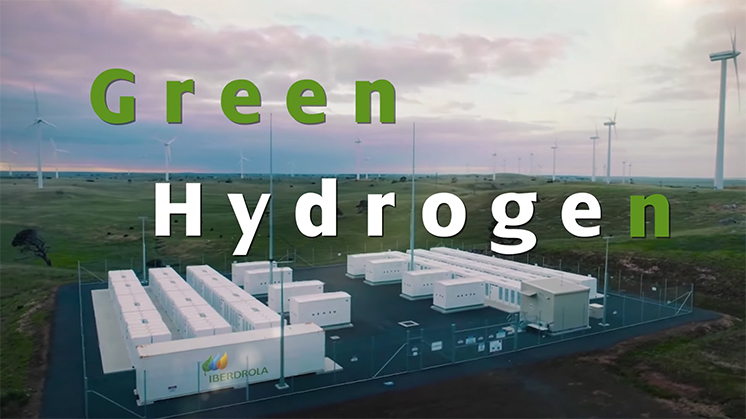Courtesy : Iberdola
GREEn hydrogen
Decarbonising the planet is one of the goals that countries around the world have set for 2050. To achieve this, decarbonising the production of an element like hydrogen, giving rise to green hydrogen, is one of the keys as this is currently responsible for more than 2 % of total global CO2 emissions. Find out how this is achieved and what its impact will be in the coming decades.

Green hydrogen, an alternative when electrification is not possible.

Learn how green hydrogen is extracted.

Green hydrogen is efficient and 100 % sustainable, with some experts predicting that it will be the fuel of the future.

Iberdrola, a global energy leader, anticipates once again by promoting green hydrogen.
HYDROGEN AS CLEAN ENERGY
Hydrogen is the most abundant chemical element in nature. As noted by the IEA, the global demand for hydrogen for use as a fuel has tripled since 1975 and reached 70 million tonnes a year in 2018. In addition, it is a clean energy source that only emits water vapour and leaves no residue in the air, unlike coal and oil.
Hydrogen has a long-standing relationship with industry. This gas has been used to fuel cars, airships and spaceships since the beginning of the 19th century. The decarbonisation of the world economy, a process that cannot be postponed, will give hydrogen more prominence. In addition, if its production costs fall by 50 % by 2030, as predicted by the World Hydrogen Council, we will undoubtedly be looking at one of the fuels of the future.
ADVANTAGES AND DISADVANTAGES OF GREEN HYDROGEN
This energy source has pros and cons that we must be aware of. Let’s go over some of its most important good points:
- 100 % sustainable: green hydrogen does not emit polluting gases either during combustion or during production.
- Storable: hydrogen is easy to store, which allows it to be used subsequently for other purposes and at times other than immediately after its production.
- Versatile: green hydrogen can be transformed into electricity or synthetic gas and used for domestic, commercial, industrial or mobility purposes.
- Transportable: it can be mixed with natural gas at ratios of up to 20 % and travel through the same gas pipes and infrastructure – increasing this percentage would require changing different elements in the existing gas networks to make them compatible.
However, green hydrogen also has negative aspects that should be borne in mind:
- High cost: energy from renewable sources, which are key to generating green hydrogen through electrolysis, is more expensive to generate, which in turn makes hydrogen more expensive to obtain.
- High energy consumption: the production of hydrogen in general and green hydrogen in particular requires more energy than other fuels.
- Safety issues: hydrogen is a highly volatile and flammable element and extensive safety measures are therefore required to prevent leakage and explosions.
IMPACT OF GREEN HYDROGEN
Hydrogen as a fuel is a reality in countries like the United States, Russia, China, France and Germany. Others like Japan are going even further and aspire to become a hydrogen economy. Below we explain what the impact will be in the future:
 Electricity and drinking water generator
Electricity and drinking water generator
These two elements are obtained by reacting hydrogen and oxygen together in a fuel cell. This process has proved very useful on space missions, for example, by providing crews with water and electricity in a sustainable manner.
 Energy storage
Energy storage
Compressed hydrogen tanks are capable of storing energy for long periods of time and are also easier to handle than lithium-ion batteries because they are lighter.
 Transport and mobility
Transport and mobility
Hydrogen’s great versatility allows it to be used in those consumption niches that are very difficult to decarbonise, such as heavy transport, aviation and maritime transport. There are already several projects under way in this area, such as Hycarus and Cryoplane, which are promoted by the European Union (EU) and aim to introduce it in passenger aircraft.
